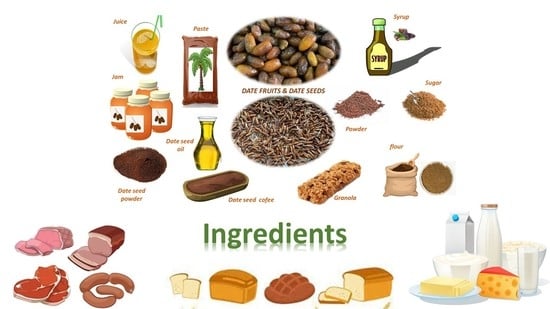Strategies for the Valorization of Date Fruit and Its Co-Products: A New Ingredient in the Development of Value-Added Foods
Abstract
Share and Cite
Muñoz-Tebar, N.; Viuda-Martos, M.; Lorenzo, J.M.; Fernandez-Lopez, J.; Perez-Alvarez, J.A. Strategies for the Valorization of Date Fruit and Its Co-Products: A New Ingredient in the Development of Value-Added Foods. Foods 2023, 12, 1456. https://doi.org/10.3390/foods12071456
Muñoz-Tebar N, Viuda-Martos M, Lorenzo JM, Fernandez-Lopez J, Perez-Alvarez JA. Strategies for the Valorization of Date Fruit and Its Co-Products: A New Ingredient in the Development of Value-Added Foods. Foods. 2023; 12(7):1456. https://doi.org/10.3390/foods12071456
Chicago/Turabian StyleMuñoz-Tebar, Nuria, Manuel Viuda-Martos, Jose Manuel Lorenzo, Juana Fernandez-Lopez, and Jose Angel Perez-Alvarez. 2023. "Strategies for the Valorization of Date Fruit and Its Co-Products: A New Ingredient in the Development of Value-Added Foods" Foods 12, no. 7: 1456. https://doi.org/10.3390/foods12071456
APA StyleMuñoz-Tebar, N., Viuda-Martos, M., Lorenzo, J. M., Fernandez-Lopez, J., & Perez-Alvarez, J. A. (2023). Strategies for the Valorization of Date Fruit and Its Co-Products: A New Ingredient in the Development of Value-Added Foods. Foods, 12(7), 1456. https://doi.org/10.3390/foods12071456











